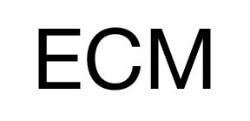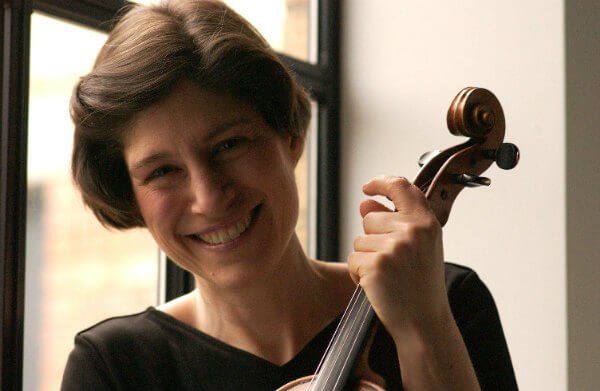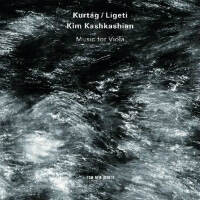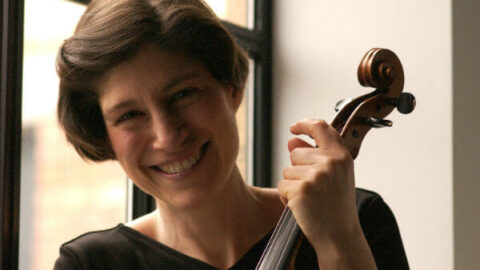 One of the most pleasing aspects of listening to solo string repertoire, from Bach to Bartók, is its intimacy—one can be alone in a quiet room with only the performer and composer. Absent other distractions, one becomes aware of every detail of the small sounds an instrument and its performer make in the process of producing the sounds notated on the page. This experience is aptly demonstrated by a new recording from Kim Kashkashian, Kurtág/Ligeti: Music for Viola. Kashkashian is an experienced performer, who has soloed with many orchestras, including Chicago, Cleveland, Berlin, Milan, London, Tokyo and Vienna, has been recorded eight albums for ECM, and teaches at the New England Conservatory. Music for Viola is a release of elemental music from a performer who displays the utmost confidence and attention to detail.
One of the most pleasing aspects of listening to solo string repertoire, from Bach to Bartók, is its intimacy—one can be alone in a quiet room with only the performer and composer. Absent other distractions, one becomes aware of every detail of the small sounds an instrument and its performer make in the process of producing the sounds notated on the page. This experience is aptly demonstrated by a new recording from Kim Kashkashian, Kurtág/Ligeti: Music for Viola. Kashkashian is an experienced performer, who has soloed with many orchestras, including Chicago, Cleveland, Berlin, Milan, London, Tokyo and Vienna, has been recorded eight albums for ECM, and teaches at the New England Conservatory. Music for Viola is a release of elemental music from a performer who displays the utmost confidence and attention to detail.

The first work on this album, Signs, Games and Messages, is nineteen of many such miniatures that have been in progress by György Kurtág since 1984. These pieces have at times been scored for other solo instruments, including cello, bass, clarinet, oboe, bassoon and flute. Akin to the aesthetic of Anton Webern in their restraint, these miniatures have been described in the past as “wispy.” While the music is extremely subtle, Kurtag has refined this score to elicit maximum resonance from the viola, and Kaskashian does not refrain from building sound that resonates in the open spaces; there is nothing brittle about its meaty quietude.
The first movement opens with a lusty slide, reminiscent of Bartók’s interpretations of Hungarian folk music. Kurtág‘s vocabulary makes use of the full range of techniques available on the viola, but extended techniques are not gratuitously used. Instead, they serve the shape of a line or adding deeper human elements to the music. In the fifth movement, short, barking almost-octaves sound like laughing; in the tenth, keening and wobbling notes ascend and descend. The music is always very focussed: the twelfth movement consists almost entirely of a slow, descending scale. In the fourteenth, short hollow tones repeat and grow; in the eighteenth, gentle melodic fragments are softly but assertively stated for only 32 seconds. In all cases, sounds and silences are deliberate and careful, but not hesitant.
 With this recording, Kashkashian’s breathing can be heard subtly under the viola, which provides something of a guide: by following her breath, the listener can hear where the phrases begin and where they end in the mind of the performer. In the Kurtág miniatures, the intent of each line or idea is clearly delineated. In the second work on the album, Sonata for Violin Solo by György Ligeti, Kashkashian points to the composer’s intent through the dark, dense sponge of notes with which Ligeti packs the music.
With this recording, Kashkashian’s breathing can be heard subtly under the viola, which provides something of a guide: by following her breath, the listener can hear where the phrases begin and where they end in the mind of the performer. In the Kurtág miniatures, the intent of each line or idea is clearly delineated. In the second work on the album, Sonata for Violin Solo by György Ligeti, Kashkashian points to the composer’s intent through the dark, dense sponge of notes with which Ligeti packs the music.
In Ligeti’s late masterpiece, Kashkashian leaves space, giving an unhurried performance of all six miniatures, even through the frenzied technical challenges of “Prestissimo con sordino.” She does not overstate Ligeti’s concentrated, microtonal line in “Hora lungă,” nor the heavy, rich chords decorating the melody in “Loop,” The album closes with “Chaconne chromatique,” a movement that drives the composition through torturous spirals, eventually emerging into a place of relative simplicity. Though this work has more notes-per-pound than the Kurtág, the two share the common vocabulary that both of these Hungarian composers inherited.
While both works have been recorded on other well-reviewed albums, this recording is well worth owning. Kashkashian’s performance is authoritative, and the placement of these two works side-by-side adds depth to both approaches to solo viola writing. And in the deepest winter, it is a comforting thing to have a warm, quiet place in which to retreat with Kashkashian and the Györgys.
Kim Kashkashian, Kurtág/Ligeti: Music for Viola (ECM New Series 2240, August 2012 | Buy it on Amazon
–
Caitlin Smith is a Canadian composer, currently based in Vienna. Follow her on Twitter: @tinyalligator.
























